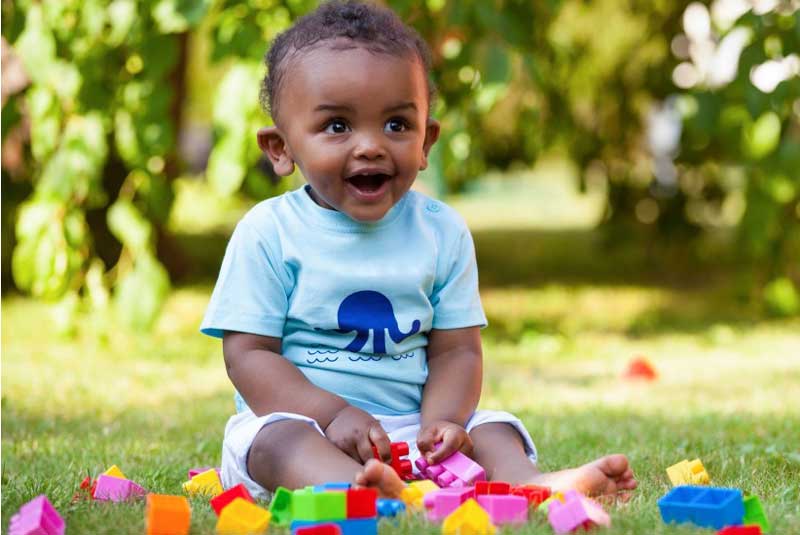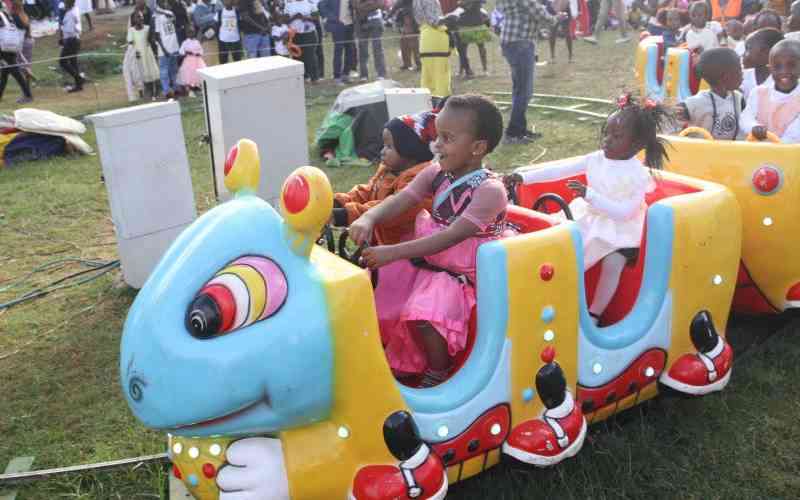
Doctors are asking parents to be more vigilant as the number of emergencies involving children swallowing harmful items double during school holidays and the festive season.
Danger lurks even in tiny objects such as pen tops and beads. When swallowed, they block the windpipe causing death or irreversible brain damage, warn Ear, Nose and Throat (ENT) specialists.
Dr Elaine Yuko and Dr Nicholas Ngugi, along with a dozen other specialists at Kenyatta National Hospital’s ENT section, have encountered thousands of cases since the ENT was set up and they say this is the riskiest season.
“We receive at least one case each day,” Dr Ngugi told The Standard. “The incidents rise during school holidays and the festive season, when we handle an average of two cases daily”.
The doctors warn the seemingly minor accidents can become very costly to a family, given a surgery to remove the objects can cost in excess of Sh25, 000 but in the worst case scenario it could affect the life of your child permanently.
They said these accidents have increased because parents and guardians leave children without supervision. However, the cases increase during the festive season due to increased consumption of meat.
Household items
The medics warn common household items such as toys with removable parts, coins, batteries, razor blades, bones, beans as well as insects such as cockroaches are known to cause serious life-long injuries or even death if mishandled or not removed quickly after entering the ear, nose or throat.
The frequency of incidents of foreign bodies entering the ear, nose and throat is as extreme as the injuries they cause are serious, according to the medics.
As a result of the prevalence of foreign body-related injuries, KNH’s ENT, for instance, is a busy environment, usually characterised with an inflow of cases of high-risk patients in need of emergency removal of foreign bodies from their bodies, as well as patients with other ear, nose and throat complications.
The specialists often have to prep for surgery within minutes of the patient arriving as the objects are often removed through emergency microscopic, endoscopic or open surgeries.
Most intrusions usually lead to surgeries, especially in children, since most children cannot stay still enough for proper removal. “Children are often scared and traumatised. Surgical removals are easier,” said Dr Ngugi.
In such scenarios, they said, every second counts, especially if the foreign body is stuck in the windpipe. They said obstruction of the windpipe is the most fatal type of injury, which will most likely have entered through the nose or mouth.
In such instances, the foreign bodies blocks movement of air, causing immense repercussions if not removed speedily, especially in children.
Stay informed. Subscribe to our newsletter
When the windpipe is obstructed, lower oxygen reaches the brain, leading to morbidity or mortality if not handled fast. The specialists said a child can stay alive for three to four minutes after blockage of the windpipe, whereas an adult can last up to five minutes before dying.
If immediate death does not occur, the patient can end up suffering brain damage, which can be irreversible.
The doctors say tiny objects such as pen tops and beads that are inhaled or ingested are the most notorious in blocking the windpipe.
Ingested bodies
“More damage can be done if an untrained person attempts to remove the object, so it is best that a trained individual does it,” cautioned Dr Ngugi. In case of ingested bodies, the doctors caution against trying to push the object down using food as doing so causes tears along the digestive system.
The specialists describe disk batteries as another highly fatal object, dictating high chances of morbidity or death when they enter the body. These batteries are used to power various devices, mainly wrist watches. Because these batteries are alkaline and have a current, they often cause burns along the digestive system, creating a hole that leads to a connection of the digestive and breathing systems, which may be fatal.
These objects pose a significant risk even if they remain in the nose and fail to reach the windpipe. Their tiny size, together with the small and slippery nature of the nostrils makes them difficult to remove with forceps and most case end up in surgery.
Such injuries are most common in young and highly active children, according to Dr Yuko and Dr Ngugi. The risk rises for children suffering from conditions such as down’s syndrome and cerebral palsy. Adults with mental problems are also at a higher risk group.
Common sources
Coins, peanuts and legumes such as beans are other common sources of injury.
“Parents should ensure they leave their children in proper care. They should also make an effort to learn first aid and ensure caregivers have basic training on first aid skills. First aid is very important as it can help dislodge the item or reduce the threat before reaching a hospital,” said Dr Yuko.
Dr Ng’ang’a added: “It is important to check the toys. Toys with removable parts are very risky to young children”.
Although not common during non-festive periods, food-related injuries also carry significant risk. Most injuries are brought on by fish bones and chunks of meat, in both children and adults.
Remove mosquitoes
The doctors have also removed mosquitoes, cockroaches and moths from patients. The doctors say cockroaches are particularly notorious for entering the ear. In one such case, they removed a live cockroach from an ear.
They explained: “Insects enter the ear, moving forward past the wax. If they move too far in, they may cause a lot of pain and serious damage. In such cases, doctors advise drowning the insects by pouring water or paraffin into the ear, thereby killing and preventing them from moving further in."
Other objects that regularly cause ear injuries, especially among adults, are toothpicks, matchsticks and earbuds.
KNH and Moi Teaching and Referral Hospital in Eldoret are the only public hospitals with equipment to safely remove such objects.
Dr Yuko and Dr Ngugi said KNH’s ENT also handles a significant number of cases of neck injuries such as trauma to the neck, throat-related issues such as inflammations like tonsillitis and adenoiditis, tumours, sinus diseases, ear diseases and nose diseases, particularly those that cause breathing difficulties.
Young children
The specialists called for vigilance when dealing with objects that can easily end up as foreign bodies, especially for parents of young children.
Even though most patients undergo successful surgeries, the financial cost can be burdensome.
Surgeries to remove foreign objects from bodies are costly of the complexity of the procedures and the time they consume as well as the high cost of acquiring and maintaining equipment used.
These surgeries often require large teams, including surgeons and anaesthists. Patients need to recuperate in the Intensive Care Unit, further driving up the costs.
Also due to lack of equipment in most public hospitals, KNH’s ENT receives tonnes of referrals, sometimes from places as far as Garissa.
 The Standard Group Plc is a
multi-media organization with investments in media platforms spanning newspaper
print operations, television, radio broadcasting, digital and online services. The
Standard Group is recognized as a leading multi-media house in Kenya with a key
influence in matters of national and international interest.
The Standard Group Plc is a
multi-media organization with investments in media platforms spanning newspaper
print operations, television, radio broadcasting, digital and online services. The
Standard Group is recognized as a leading multi-media house in Kenya with a key
influence in matters of national and international interest.
 The Standard Group Plc is a
multi-media organization with investments in media platforms spanning newspaper
print operations, television, radio broadcasting, digital and online services. The
Standard Group is recognized as a leading multi-media house in Kenya with a key
influence in matters of national and international interest.
The Standard Group Plc is a
multi-media organization with investments in media platforms spanning newspaper
print operations, television, radio broadcasting, digital and online services. The
Standard Group is recognized as a leading multi-media house in Kenya with a key
influence in matters of national and international interest.






